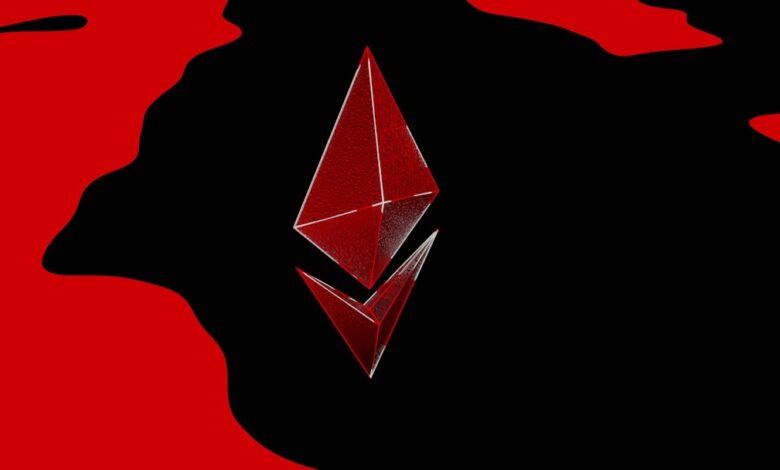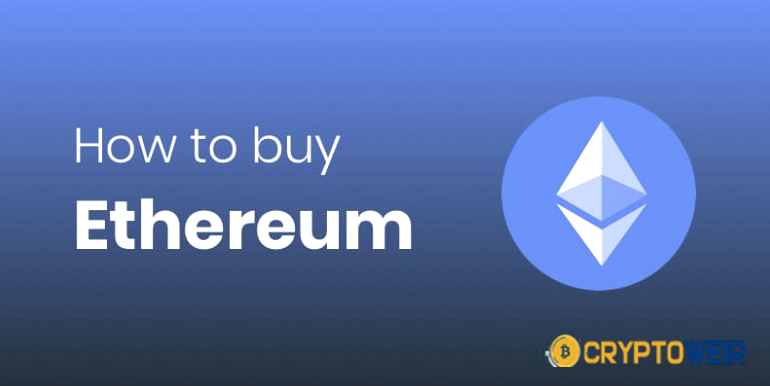Ethereum Explained: Everything You Need to Know
Ethereum Explained: Everything You Need to Know

Ethereum Explained: Everything You Need to Know
Can a decentralized network revolutionize the way we think about finance and transactions? This is the question that Ethereum, a pioneering blockchain network, aims to answer.
Ethereum’s innovative technology has enabled the creation of smart contracts, self-executing contracts with the terms of the agreement written directly into lines of code. This has opened up new possibilities for various industries, from finance to supply chain management.

As a leading cryptocurrency platform, Ethereum has garnered significant attention for its potential to transform the digital landscape. In this article, we’ll delve into the world of Ethereum, exploring its core features, benefits, and the impact it could have on the future.
Key Takeaways
- Understanding Ethereum’s decentralized blockchain network.
- The role of smart contracts in automating transactions.
- Ethereum’s potential to revolutionize various industries.
- The significance of Ethereum in the cryptocurrency market.
- What to expect from the future of Ethereum and blockchain technology.
What is Ethereum?
At its core, Ethereum is more than just a cryptocurrency; it’s a programmable blockchain that enables the creation of smart contracts and decentralized applications. Ethereum was founded by Vitalik Buterin and is known for its smart contract functionality, distinguishing it from Bitcoin.
The Vision Behind Ethereum
Ethereum was designed to be a decentralized platform that allows developers to build a wide range of applications on its blockchain. The vision behind Ethereum is to create a more open and accessible internet, often referred to as Web3.0. This vision is centered around the idea of decentralization, enabling users to interact directly with each other without the need for intermediaries.
How Ethereum Differs from Bitcoin
While both Ethereum and Bitcoin are cryptocurrencies that utilize blockchain technology, they have distinct purposes and capabilities. Bitcoin is primarily a digital currency and store of value, whereas Ethereum is a programmable blockchain that supports the creation of smart contracts and decentralized applications (dApps).
| Feature | Ethereum | Bitcoin |
|---|---|---|
| Purpose | Programmable blockchain for smart contracts and dApps | Digital currency and store of value |
| Blockchain Type | Turing-complete blockchain | Basic blockchain for transaction recording |
| Transaction Focus | Supports complex smart contracts and dApps | Primarily for financial transactions |
Ethereum’s flexibility and programmability make it a versatile platform for a wide range of applications beyond simple financial transactions, setting it apart from Bitcoin.
The History of Ethereum
Launched in 2015, Ethereum has its roots in a whitepaper published by Vitalik Buterin in 2013. This whitepaper proposed a new kind of blockchain platform that would enable the creation of decentralized applications (dApps) beyond the simple transfer of digital currency.
Vitalik Buterin and the Origins
Vitalik Buterin, a young programmer and cryptocurrency enthusiast, is the founder of Ethereum. Buterin’s vision was to create a platform that could support more complex smart contracts and decentralized applications.
Key Milestones in Ethereum’s Development
Ethereum’s development has been marked by several key milestones, including the launch of the Beacon Chain in December 2020, which was a crucial step towards Ethereum 2.0.
Notable Network Upgrades
The Ethereum network has undergone several significant upgrades, including the London hard fork, which introduced a new fee structure.
Ethereum continues to evolve, with ongoing developments aimed at improving scalability and security.
Understanding Blockchain Technology
Blockchain technology, as utilized by Ethereum, provides a secure and transparent way to conduct transactions and execute smart contracts through the Ethereum Virtual Machine (EVM). This decentralized technology is the foundation upon which Ethereum operates, enabling a wide range of applications beyond simple transactions.
Distributed Ledger Technology Explained
Distributed Ledger Technology (DLT) is a decentralized database managed by multiple participants across multiple nodes. Ethereum’s blockchain is a form of DLT that records transactions and smart contract executions in a transparent and immutable manner. This technology ensures that once data is written, it cannot be altered, providing a permanent and trustworthy record.
How Ethereum’s Blockchain Works
Ethereum’s blockchain works by validating transactions and smart contract executions through a network of nodes. These nodes verify the transactions and execute the smart contracts through the EVM, ensuring that the blockchain remains consistent across the network. This process is secured through a consensus mechanism, which prevents a single entity from controlling the blockchain.
The Ethereum Virtual Machine (EVM)
The Ethereum Virtual Machine (EVM) is a crucial component of Ethereum’s blockchain, responsible for executing smart contracts. The EVM is a Turing-complete machine that allows it to execute complex smart contracts, making Ethereum a versatile platform for decentralized applications (dApps).
| Key Component | Description |
|---|---|
| Distributed Ledger Technology | A decentralized database managed across multiple nodes. |
| Ethereum Virtual Machine (EVM) | Executes smart contracts on the Ethereum blockchain. |
| Consensus Mechanism | Secures the Ethereum blockchain through validation. |
Smart Contracts: The Heart of Ethereum
At the core of Ethereum’s ecosystem are smart contracts, self-executing contracts with terms written directly into code. These contracts automate various processes, eliminating the need for intermediaries and enhancing the efficiency of transactions.
What Are Smart Contracts?
Smart contracts are programs that run on the Ethereum Virtual Machine (EVM), executing specific tasks when certain conditions are met. They are immutable and transparent, ensuring that all parties can trust the outcome without needing to trust each other.
Use Cases for Smart Contracts
Smart contracts have a wide range of applications, including:
- Decentralized Finance (DeFi): Smart contracts enable lending, borrowing, and trading on DeFi platforms.
- Supply Chain Management: They can track goods and materials, ensuring authenticity and compliance.
- Insurance: Smart contracts can automate claims processing based on predefined conditions.
Programming Languages for Ethereum Development
Several programming languages are used for developing smart contracts on Ethereum, including:
| Language | Description |
|---|---|
| Solidity | The primary language for Ethereum smart contract development, known for its similarity to JavaScript. |
| Vyper | A more secure alternative to Solidity, designed to simplify smart contract development. |
Understanding these programming languages is crucial for developers looking to build on the Ethereum platform.
Ether (ETH): The Native Cryptocurrency
Ether (ETH), the cryptocurrency that powers the Ethereum network, is essential for transaction fees and staking. It plays a vital role in the smooth operation of the Ethereum ecosystem.
Understanding Ether’s Role in the Ecosystem
Ether is used for various purposes within the Ethereum network. It is primarily used to pay for transaction fees, known as gas fees, which are necessary to execute transactions and smart contracts on the network. Additionally, Ether is used for staking, a process that helps secure the network and validate transactions.
How Ether is Created and Distributed
Ether is created through a process called mining, where powerful computers solve complex mathematical problems to validate transactions and create new blocks. The Ethereum network is transitioning to a proof-of-stake consensus mechanism, where Ether will be created through staking. The distribution of Ether occurs through various means, including mining rewards, staking rewards, and sales on cryptocurrency exchanges.
Gas Fees and Transaction Costs
Gas fees are a critical component of the Ethereum network, as they incentivize validators to process transactions and smart contracts. The cost of gas fees can fluctuate based on network congestion and the complexity of transactions. Understanding gas fees is essential for users to manage their transaction costs effectively.
| Transaction Type | Gas Fee | Ether Used |
|---|---|---|
| Simple Transfer | Low | 0.0001 ETH |
| Smart Contract | Medium to High | 0.001-0.1 ETH |
| Complex Smart Contract | High | 0.1-1 ETH |
The Ethereum Network Architecture
At the heart of Ethereum is a robust network architecture that utilizes nodes and validators to secure the network. This decentralized system is crucial for the integrity and security of the Ethereum blockchain.
Nodes and Validators
Nodes on the Ethereum network store a copy of the blockchain, verifying and relaying transactions. Validators, on the other hand, are responsible for creating new blocks and ensuring the integrity of the blockchain through consensus mechanisms. Together, they form the backbone of the Ethereum network.

Consensus Mechanisms
Ethereum has transitioned from Proof of Work (PoW) to Proof of Stake (PoS), a more energy-efficient consensus mechanism. This transition has significant implications for the network’s security and decentralization.
Proof of Work (PoW)
PoW required miners to solve complex mathematical puzzles, consuming significant computational power and energy. While secure, it was criticized for its environmental impact.
Proof of Stake (PoS)
PoS, on the other hand, requires validators to “stake” their own Ether to participate in the validation process. This method is more energy-efficient and less vulnerable to centralization.
Network Security and Decentralization
The transition to PoS has enhanced Ethereum’s decentralization and security. The network is now more resilient to attacks and more environmentally friendly.
| Consensus Mechanism | Security | Decentralization | Energy Efficiency |
|---|---|---|---|
| Proof of Work (PoW) | High | Medium | Low |
| Proof of Stake (PoS) | High | High | High |
Ethereum2.0: The Merge and Beyond
As Ethereum transitions to Ethereum2.0, the network is poised to address long-standing issues of scalability and environmental impact. This significant upgrade is not just a minor tweak but a comprehensive overhaul aimed at enhancing the network’s efficiency, security, and sustainability.
The Transition to Proof of Stake
One of the cornerstone changes in Ethereum2.0 is the transition from Proof of Work (PoW) to Proof of Stake (PoS). This shift is expected to significantly reduce the network’s energy consumption, making it more environmentally friendly. Proof of Stake allows validators to create new blocks based on the amount of Ether they hold and are willing to “stake” as collateral, rather than relying on energy-intensive computations.
Sharding and Scalability Solutions
Ethereum2.0 also introduces sharding, a technique designed to improve the network’s scalability. Sharding involves splitting the blockchain into smaller, more manageable pieces called shards, each capable of processing its own transactions. This allows the network to handle a higher volume of transactions in parallel, significantly enhancing its overall throughput.
| Feature | Pre-Ethereum2.0 | Post-Ethereum2.0 |
|---|---|---|
| Consensus Mechanism | Proof of Work | Proof of Stake |
| Scalability | Limited by block size and frequency | Enhanced through sharding |
| Environmental Impact | High energy consumption | Significantly reduced energy consumption |
Environmental Impact Improvements
The transition to Proof of Stake is expected to reduce Ethereum’s energy consumption by up to 99%. This drastic reduction makes Ethereum a more sustainable option for users and developers, aligning with the growing demand for environmentally responsible blockchain technologies.
Future Roadmap and Updates
The Ethereum2.0 roadmap is ambitious, with several phases planned to ensure a smooth transition. Future updates are expected to further enhance the network’s capabilities, including the implementation of more advanced scalability solutions and continued improvements to the network’s security and decentralization.
Decentralized Applications (dApps) on Ethereum
Ethereum’s robust ecosystem supports a diverse array of dApps, from finance to gaming, enhancing user experience and security. Decentralized applications (dApps) on Ethereum offer a range of services, leveraging Ethereum’s blockchain and smart contract functionality.
What Makes a dApp Different from Traditional Applications
dApps differ significantly from traditional applications. They operate on a blockchain network, making them decentralized and less susceptible to censorship.
Key characteristics include:
- Decentralized governance
- Open-source code
- Autonomous operation through smart contracts
Popular Ethereum dApps
Several dApps have gained popularity on the Ethereum network. Examples include:
| dApp Name | Category | Description |
|---|---|---|
| Uniswap | DeFi | A decentralized exchange protocol |
| OpenSea | NFT Marketplace | A platform for buying, selling, and trading NFTs |
| Aave | Lending Protocol | A decentralized lending platform |
Building on Ethereum
Developers can build dApps on Ethereum using various programming languages, with Solidity being the most prominent.
Ethereum’s developer tools and resources
make it an attractive platform for creating dApps.
Layer2 Solutions
To address scalability issues, Ethereum has implemented Layer2 solutions. These solutions enhance transaction throughput and reduce costs.
Decentralized Finance (DeFi) Revolution
Ethereum’s DeFi ecosystem is pioneering a new era in financial services. Decentralized finance, or DeFi, leverages Ethereum’s blockchain technology to offer financial services that are accessible, transparent, and permissionless.
Understanding DeFi Protocols
DeFi protocols are the backbone of the DeFi ecosystem, providing the necessary infrastructure for various financial applications. These protocols are built on Ethereum’s smart contract platform, enabling the creation of complex financial instruments and services.
Key features of DeFi protocols include:
- Decentralized governance
- Automated processes through smart contracts
- Interoperability between different DeFi applications
Major DeFi Applications
The DeFi ecosystem on Ethereum hosts a wide range of applications, transforming traditional financial services. Some of the major DeFi applications include:
Lending and Borrowing
DeFi lending platforms allow users to lend their assets and earn interest, while borrowers can take loans by providing collateral. This has opened up new opportunities for both lenders and borrowers.
Decentralized Exchanges (DEXs)
DEXs enable users to trade assets directly from their wallets, without the need for intermediaries. This enhances security and reduces transaction costs.
Yield Farming
Yield farming involves providing liquidity to DeFi protocols and earning rewards in the form of additional tokens. It’s a complex strategy that requires careful consideration of risks and rewards.

Risks and Considerations
While DeFi offers numerous benefits, it also comes with its own set of risks. These include smart contract vulnerabilities, market volatility, and regulatory uncertainties. Understanding these risks is crucial for navigating the DeFi landscape.
The DeFi revolution is still in its early stages, and as it continues to evolve, it will be important for participants to stay informed and adapt to the changing landscape.
Investing in Ethereum
As the second-largest cryptocurrency by market capitalization, Ethereum presents a compelling investment opportunity. Investors are drawn to its robust ecosystem, which supports a wide range of decentralized applications (dApps) and decentralized finance (DeFi) protocols.
Ethereum as a Digital Asset
Ethereum is not only a cryptocurrency but also a platform that enables the creation of digital assets through its token standards, such as ERC-20. This versatility enhances its appeal to investors looking for a digital asset with multiple use cases.
Methods to Acquire Ethereum
There are several ways to acquire Ethereum, including:
- Through cryptocurrency exchanges like Coinbase and Binance
- Via peer-to-peer transactions
- Using decentralized exchanges (DEXs)
Each method has its own advantages and considerations, such as fees, security, and ease of use.
Staking Ethereum for Passive Income
With the transition to Ethereum 2.0 and the proof-of-stake (PoS) consensus mechanism, investors can now stake their Ethereum to earn passive income. Staking involves locking up a certain amount of ETH to support the network’s operation and validate transactions.
Staking rewards can provide a steady income stream, making Ethereum an attractive option for long-term investors.
Market Analysis and Price Factors
The price of Ethereum is influenced by various factors, including market demand, technological developments, and regulatory news. Investors should stay informed about these factors to make informed decisions.
Conducting thorough market analysis, including technical and fundamental analysis, can help investors understand the potential risks and rewards associated with investing in Ethereum.
Security and Risks in the Ethereum Ecosystem
Navigating the Ethereum ecosystem requires a thorough understanding of its security landscape. As the ecosystem continues to evolve, it’s crucial for users to be aware of the potential risks and take necessary precautions.
Common Security Vulnerabilities
Ethereum’s decentralized nature, while beneficial, introduces unique security challenges. Smart contract vulnerabilities are a significant concern, as flaws in the code can lead to exploits and financial losses.
- Reentrancy attacks
- Front-running attacks
- Unsecured use of tx.origin
Understanding these vulnerabilities is the first step in mitigating risks.
Best Practices for Securing Your Assets
To protect your assets on the Ethereum network, it’s essential to follow best practices. Using hardware wallets, enabling two-factor authentication, and being cautious of phishing attempts are crucial steps.
Key security measures include:
- Regularly updating software and firmware
- Using secure networks for transactions
- Monitoring accounts for suspicious activity
Regulatory Considerations
The regulatory environment for Ethereum and other cryptocurrencies is continually evolving. Understanding the legal and compliance requirements in your jurisdiction is vital.
“Regulatory clarity is crucial for the mainstream adoption of cryptocurrencies like Ethereum.” –
Staying informed about regulatory changes can help you navigate the ecosystem more safely.
Smart Contract Audits
Smart contract audits play a critical role in ensuring the security and reliability of decentralized applications on Ethereum. These audits help identify potential vulnerabilities before they can be exploited.
| Audit Criteria | Description | Importance Level |
|---|---|---|
| Code Review | Thorough examination of the smart contract code | High |
| Vulnerability Testing | Simulated attacks to identify potential vulnerabilities | High |
| Compliance Check | Ensuring the contract complies with relevant regulations | Medium |
Conclusion: The Future of Ethereum
Ethereum continues to evolve, with ongoing developments in Ethereum2.0 and DeFi contributing to its growth and potential. As the ecosystem expands, it’s clear that Ethereum’s future is closely tied to the adoption and innovation of its underlying technology.
The Ethereum price has been subject to market fluctuations, but the long-term outlook remains promising. Staying informed about ethereum news is crucial for understanding the factors that influence the ecosystem.
As Ethereum transitions to Proof of Stake and implements sharding and scalability solutions, the network is expected to become more efficient and environmentally friendly. The Ethereum2.0 upgrade is a significant step towards achieving this goal.
The future of Ethereum is bright, with a growing ecosystem and increasing adoption. As the network continues to mature, it’s likely that we’ll see new use cases and applications emerge, further solidifying Ethereum’s position in the blockchain landscape.
FAQ
What is Ethereum and how does it differ from Bitcoin?
Ethereum is a decentralized blockchain platform that enables the creation of smart contracts and decentralized applications (dApps). Unlike Bitcoin, which is primarily a digital currency, Ethereum’s blockchain is programmable, allowing for a wide range of applications beyond digital currency.
What is the Ethereum Virtual Machine (EVM) and its role in the ecosystem?
The Ethereum Virtual Machine (EVM) is a runtime environment for smart contracts on the Ethereum network. It executes the bytecode of smart contracts, allowing for the automation of various processes and the creation of decentralized applications.
How does Ethereum’s transition to Proof of Stake (PoS) affect the network?
Ethereum’s transition to Proof of Stake (PoS) with the Ethereum2.0 upgrade is expected to improve the network’s scalability, security, and energy efficiency. PoS replaces the energy-intensive mining process with a staking mechanism, where validators are chosen to create new blocks based on the amount of Ether they hold and are willing to stake.
What are decentralized applications (dApps) and how are they built on Ethereum?
Decentralized applications (dApps) are applications that run on a blockchain network, in this case, Ethereum. They are built using smart contracts and can be used for a variety of purposes, including decentralized finance (DeFi), gaming, and social media. Developers can build dApps on Ethereum using programming languages like Solidity.
What is the role of Ether (ETH) in the Ethereum ecosystem?
Ether (ETH) is the native cryptocurrency of the Ethereum network. It is used to pay for transaction fees, also known as gas fees, and is used as a form of payment for goods and services within the ecosystem. ETH is also used for staking and validating transactions on the network.
How can I acquire Ethereum?
You can acquire Ethereum through various methods, including buying it on cryptocurrency exchanges, receiving it as payment for goods or services, or through mining or staking. You can also purchase Ethereum through online brokerages or trading platforms.
What are the risks associated with investing in Ethereum?
Investing in Ethereum carries several risks, including market volatility, regulatory risks, and security risks. The value of ETH can fluctuate rapidly, and there is a risk of losing some or all of your investment. Additionally, security risks, such as hacking and phishing, can also impact your investment.
How can I secure my Ethereum assets?
To secure your Ethereum assets, it is recommended to use a reputable cryptocurrency wallet, enable two-factor authentication, and keep your private keys safe. You should also be cautious of phishing scams and never share your private keys or seed phrases with anyone.
What is the significance of smart contract audits in the Ethereum ecosystem?
Smart contract audits are crucial in ensuring the security and integrity of smart contracts on the Ethereum network. Audits help identify vulnerabilities and potential risks, allowing developers to fix issues before deploying their contracts. This helps to prevent exploits and hacks, protecting users’ assets and maintaining trust in the ecosystem.
What is the future of Ethereum and what can we expect from the Ethereum2.0 upgrade?
The Ethereum2.0 upgrade is expected to bring significant improvements to the network, including increased scalability, security, and energy efficiency. The upgrade will also enable the widespread adoption of decentralized applications and decentralized finance (DeFi) protocols, further expanding the Ethereum ecosystem.









